Arm Lift in Brazil
Search and Compare the Best Clinics and Doctors at the Lowest Prices for Arm Lift in Brazil

Find the best clinics for Arm Lift in Brazil
With Medijump you can browse 7 facilities offering Arm Lift procedures in Brazil. The cheapest price available is $1,500 in Rio de Janeiro. And for the cheapest price globally, prices start from $26 in Thailand.
Arm Lift in Rio de Janeiro
Price: $ 1,500
Arm Lift in Araraquara
Price: $ 3,029
Thailand offers the best prices Worldwide
Price: $ 26
From 7 verified reviews
Regiane Mendes, 16 December 2018
Great Professionals!
From 1 verified reviews
Vyacheslav Kalaushin, 18 April 2016
One of the best Klinik.
From 17 verified reviews
Marcia Megumi, 06 July 2020
Excellent service, great results. I highly recommend it.
Instituto Braga, located in R Para, Sao Paulo, Brazil offers patients Arm Lift procedures among its total of 29 available procedures, across 1 different specialties. The cost of a Arm Lift procedure starts from $4,641, whilst the national average price is approximately $3,543. There are many specialists available at the Clinic, with 4 in total, and they are accredited by The American Society for Aesthetic Plastic Surgery
Dra Carla Iaconelli, located in R Para, Sao Paulo, Brazil offers patients Arm Lift procedures among its total of 111 available procedures, across 2 different specialties. Currently, there's no pricing information for Arm Lift procedures at Dra Carla Iaconelli, as all prices are available on request only, whilst the national average price is approximately $3,543. All procedures and treatments are undertaken by the lead specialist at the Hospital, and they have multiple recognized accreditations, including: FEBRASGO - Federação Brasileira das Associações de Ginecologia e ObstetríciaSBRA - Sociedade Brasileira de Reprodução Assistida
From 2 verified reviews
Talita Gonçalves, 01 May 2019
Wonderful love my surgery I did lipo abdominoplasty and the buttock augmentation was beautiful the surgery all my friends praise dr marco perfect 😍
CosmeticVacations, located in R Real Grandeza, Rio de Janeiro, Brazil offers patients Arm Lift procedures among its total of 64 available procedures, across 7 different specialties. Currently, there's no pricing information for Arm Lift procedures at CosmeticVacations, as all prices are available on request only, whilst the national average price is approximately €3,252. All procedures and treatments are undertaken by the lead specialist at the Hospital, and they have multiple recognized accreditations, including: ASPS - American Society of Plastic SurgeonsSBCP - Sociedade Brasileira de Cirurgia PlásticaSBD - Sociedade Brasileira de DermatologiaSBCD - Sociedade Brasileira de Cirurgia DermatológicaAEXPI - Associação dos Ex-alunos do Professor Ivo PitanguyCBA - Consórcio Brasileiro de AcreditaçãoSBA - Sociedade Brasileira de AnestesiologiaSBCM - Sociedade Brasileira de Cirurgia da MãoSBU - Sociedade Brasileira de Urologia
- Home
- Brazil
Compare Before & After Photos of _procedure_photos.phpArm Lift


Full-side view
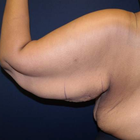
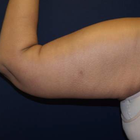
Full-side view

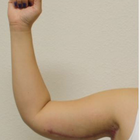
Full-side view

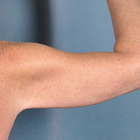
Full-side view

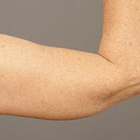
Full-side view


Full-side view
WHY US?
At Medijump, we're making medical easy. You can search, compare, discuss, and book your medical all in one place. We open the door to the best medical providers worldwide, saving you time and energy along the way, and it's all for FREE, no hidden fees, and no price markups guaranteed. So what are you waiting for?

Free

Best Price

Widest Selection

Risk-Free
What you need to know about Arm Lift in Brazil
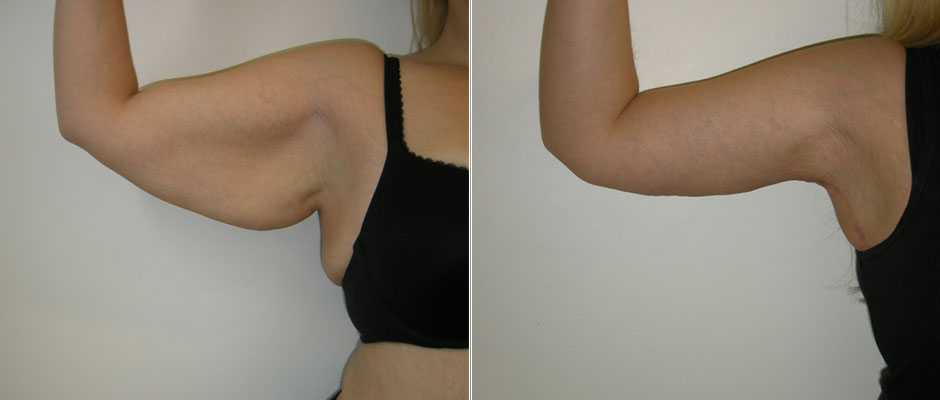
An arm lift, also known as a Brachioplasty, is a cosmetic surgery to treat sagging underarms and the connecting area of the chest wall. The surgery improves the appearance of the under portion of a person’s upper arm. It reduces extra skin, removes excess fat, tightens and smooths the underlying tissue that defines the shape of the upper arm. The surgery can make your upper arms look more defined and toned.
As you get older, your skin changes and becomes loose, particularly the skin on your upper arms. Genetics and significant weight loss also play a role in the development of drooping upper arms. While exercise can strengthen the muscle tone in your upper arm, it cannot correct excess skin that has lost its elasticity.
You might consider this procedure if the undersides of your upper arm appear loose or sagging due to excess skin and fat. Since it can improve your appearance, many people who had the procedure found that it boosted their body image.
In general, good candidates for an arm lift surgery are individuals with significant upper arm skin laxity, individuals who are not significantly overweight, and healthy individuals without medical conditions, as it can increase the risk of surgery.
What is the cost of undergoing the Arm Lift in Brazil?
The cost of an Arm Lift varies depending on multiple factors. These include the surgeon's fees, which can vary significantly based on the surgeon's experience and geographical location, the cost of the anesthesia, the clinical facility's charges, and any additional expenses such as lab tests and post-surgery garments.
Insurance usually does not cover the cost of an Arm Lift, as it's considered a cosmetic procedure. However, many surgeons offer patient financing plans to make the procedure more affordable. As prospective patients approach this decision, it's vital to remember that the surgeon's experience and your comfort should always take precedence over cost.
How Long Should I Stay in Brazil for a Arm Lift Procedure?
The length of stay following the arm lifts in Brazil varies from patient to patient. Some individuals might need one to two nights of hospital stay, especially if the procedure was extensive or if the individual has other chronic health conditions that need monitoring. However, in many cases, individuals will be discharged on the same day when the surgical procedure is completed, contingent on the recovery from anesthesia and initial post-operative stability. It's important that the individual has a support system in place to assist during the first few days. Typically, persons getting an arm lift should expect to stay in the region for a week to two weeks for the initial recovery and follow-up. A longer stay might be necessary if there are complications.
What's the Recovery Time for Arm Lift Procedures in Brazil?
The recovery period of an arm lift is typically short as long as you follow your surgeon’s postoperative care instruction. You may be able to return to work and resume some light activities within two weeks, and you should be able to return to your normal daily routine in six weeks. The surgeon may get you to wear a compression sleeve for a few weeks to keep your swelling down. However, allow six months before doing any strenuous and athletic activities, such as sport, because it might stretch the incision. The healing time for your swelling may take two to three months. Contact your doctor immediately if you experience shortness of breaths, irregular heartbeat, chest pains, a fever, or redness of the skin.
What does a Arm Lift Procedure Involve?
Before the actual procedure, your plastic surgeon will likely review your medical history and ask you about any medications you are taking or have taken recently. You may be required to do a physical exam to determine the treatment options, a chest X-ray, and an electrocardiogram. You can also discuss your expectations in terms of appearance post-surgery. During this discussion and evaluation, be sure to ask your surgeon questions and tell them your concerns because it is very important to understand all aspects of an arm lift procedure, such as the benefits and risks. If you smoke, your surgeon will ask you to stop around one or two months before the surgery to reduce the risk of complications.
The surgery can be performed in a hospital or an outpatient surgical facility. Your surgeon will start by marking on the underside of your arms where they plan to make incisions. The incision length depends on the amount of excess skin to be removed and generally placed on the inside or the back of the arm. Then, you are given either general or local anesthesia. Your surgeon will recommend the best choice for you.
Guided by the marks on your arms, your surgeon tightens and reshapes the tissue in your upper arms. Then they pulls your skin back over the tissue and secures it with stitches. If you have any excess fat in the area, suction technique (liposuction) may also be used to remove the fat. Finally, your skin is smoothed over the new contours and excess skin is removed. The whole procedure normally takes two to three hours to finish.
What sort of Aftercare is Required for Arm Lift Procedures in Brazil?
Your surgeon will give you aftercare instructions, which will cover what medications to take and when, how to take care of your wounds, warning signs, and a timeline for follow up appointments. It is important to strictly follow your surgeon’s aftercare instructions. Your surgeon may prescribe painkillers and to prevent wound infections you may need to take oral antibiotics or topical medications. While recovering, it is essential to avoid smoking because smoking slows down the healing process and will increase your risk of infections and permanent scarring. To maintain the result of arm lift surgery, you will need to maintain a stable weight and general fitness.
What's the Success Rate of Arm Lift Procedures in Brazil?
The success rate of a Arm Lift, such as an arm lift, hinges on factors like the patient's overall health, weight stability post-procedure, and the surgeon's expertise. Ensuring the procedure is performed by a board-certified plastic surgeon can dramatically optimize outcomes. Patient satisfaction post Arm Lift is typically high, with most studies showcasing rates between 80 to 90 percent. This high success rate is often attributed to improved arm contour, enhanced comfort during physical activities, and boosted self-esteem.
However, success is invariably subjective and varies amongst individuals, so it's critical to set realistic expectations whilst bearing in mind that the aim is enhancement, not perfection. Moreover, the occurrence of complications post arm lift procedures is relatively scarce, particularly when under the experienced hands of a renowned surgeon.When the Arm Lift is performed as part of overall body contouring after significant weight loss, the success rates and patient satisfaction tends to be even higher. This is supported by enhanced quality of life experienced by the patients, resultant of simplified daily routines and renewed self-confidence. Overall, the success of an arm lift procedure extends beyond just physical transformation, contributing largely to the individual's psychological well-being.
Are there Alternatives to Arm Lift Procedures in Brazil?
If you prefer less invasive procedures, some alternative procedures can be used instead of arm lift surgery.
- Laser Skin Tightening is perfect for those with mild to moderate skin laxity. Your upper arms will be treated with a high-power surgical laser that can stimulate collagen production in your skin. It involves no scarring, no downtime, and almost no uncomfortable feelings. Nevertheless, the results appear gradually and are not as effective as an arm lift. You might need to undergo multiple treatments before you get to your desired result.
- Mesotherapy is used to melt fat and tighten skin. A solution containing amino acids, medication, and natural ingredients will be injected into the middle layer of your skin. The effects will be visible after four to eight weeks and it may not be effective if you have a lot of excess skin.
Other alternatives are Vaser liposuction, Lipodissolve, Thermage, and massage therapy.
What Are the Risks and Complications of the Arm Lift?
Like any surgical procedure, an Arm Lift also carries some inherent risks. Some common complications include infections, seromas (pockets of fluid), hematoma (blood accumulating under the skin), and unfavorable scarring. Other risks involve changes in skin sensation, adverse reactions to anesthesia, and dissatisfaction with the overall aesthetic outcome. In some rare cases, blood clots can form which can be a serious health hazard. However, these risks are typically minimized in a well-equipped surgical setting and under the care of a board-certified cosmetic surgeon.
What are the preparatory steps required before undergoing the Arm Lift in Brazil?
Before undergoing Arm Lift procedure in Brazil, thorough preparation is necessary to ensure a smoother process and optimal results. Most clinics require pre-assessment consultations to study your medical history and assess your overall health condition. The healthcare provider may conduct some tests, including blood tests or diagnostic imaging, to rule out any unseen conditions. It's crucial for patients to inform about any current medical conditions, allergies, or any medications or supplements they're currently taking.
Smoking and excessive alcohol intake can interfere with the healing process and result in complications after surgery. Therefore, patients may need to abstain from smoking and limit alcohol consumption for a certain period before and after the procedure. It's also advisable to maintain a stable weight and healthy nutritional habits prior to the surgery. On the day of the operation, most clinics suggest that patients come in comfortable, loose clothing.
Whilst the information presented here has been accurately sourced and verified by a medical professional for its accuracy, it is still advised to consult with your doctor before pursuing a medical treatment at one of the listed medical providers
No Time?
Tell us what you're looking for and we'll reachout to the top clinics all at once
Enquire Now

Popular Procedures in Brazil
Prices Start From $20

Prices Start From $85

Prices Start From $167

Prices Start From $120

Prices Start From $931

Prices Start From $76

Prices Start From $236

Recommended Medical Centers in Brazil for Arm Lift

- Interpreter services
- Translation service
- Religious facilities
- Medical records transfer
- Medical travel insurance
- Health insurance coordination
- TV in the room
- Safe in the room
- Phone in the room
- Private rooms for patients available

- Interpreter services
- Translation service
- Religious facilities
- Medical records transfer
- Medical travel insurance
- Health insurance coordination
- TV in the room
- Safe in the room
- Phone in the room
- Private rooms for patients available

- Interpreter services
- Translation service
- Religious facilities
- Medical records transfer
- Medical travel insurance
- Health insurance coordination
- TV in the room
- Safe in the room
- Phone in the room
- Private rooms for patients available

- Interpreter services
- Translation service
- Religious facilities
- Medical records transfer
- Medical travel insurance
- Health insurance coordination
- TV in the room
- Safe in the room
- Phone in the room
- Private rooms for patients available

- Interpreter services
- Translation service
- Religious facilities
- Medical records transfer
- Medical travel insurance
- Health insurance coordination
- TV in the room
- Safe in the room
- Phone in the room
- Private rooms for patients available

- Interpreter services
- Translation service
- Religious facilities
- Medical records transfer
- Medical travel insurance
- Health insurance coordination
- TV in the room
- Safe in the room
- Phone in the room
- Private rooms for patients available

- Interpreter services
- Translation service
- Religious facilities
- Medical records transfer
- Medical travel insurance
- Health insurance coordination
- TV in the room
- Safe in the room
- Phone in the room
- Private rooms for patients available

- Interpreter services
- Translation service
- Religious facilities
- Medical records transfer
- Medical travel insurance
- Health insurance coordination
- TV in the room
- Safe in the room
- Phone in the room
- Private rooms for patients available

- Interpreter services
- Translation service
- Religious facilities
- Medical records transfer
- Medical travel insurance
- Health insurance coordination
- TV in the room
- Safe in the room
- Phone in the room
- Private rooms for patients available

- Interpreter services
- Translation service
- Religious facilities
- Medical records transfer
- Medical travel insurance
- Health insurance coordination
- TV in the room
- Safe in the room
- Phone in the room
- Private rooms for patients available
Arm Lift in and around Brazil
About Brazil
Occupying the title of the largest country in South America, Brazil embraces a diverse population of over 209 million people. The nation is globally renowned for its passion for football (also referred to as soccer in some parts of the world) and their dynamic, flamboyant carnival traditions, boasting a vibrant mix of music, dance, and colorful attire.
In addition to its vivacious culture, Brazil is a sanctuary of spectacular natural beauty. The country nurtures some of the world's most stunning natural wonders, including the dramatic Iguacu Falls and the world's largest tropical rainforest, the Amazon Rainforest, teeming with diverse plant and animal species. One can't miss the landmark figurine of Christ the Redeemer in Rio de Janeiro that towers 98-feet high, becoming a symbol of Brazil's deep-rooted religious faith and an iconic sight that captures hearts worldwide.
Brazil offers more than 60 JCI-accredited facilities and is one of the leading destinations in the world for cosmetic surgery, with Arm Lift procedures being especially popular. Doctors are often Western-trained and speak English on top of Portuguese and Spanish. Local accreditations include the Consortium of Brazilian Accreditation and the Brazilian Hospital Medical Quality Organization (ONA). Popular locations within Brazil include the capital Brasilia, Rio de Janeiro, Sao Paulo, and Curitiba.
Popular Parts of Brazil
- Rio de Janeiro is a combination of natural attractions and metropolis. It is known to be a party city that offers good times and an unforgettable experience. Lounge around in the world-famous beaches of Ipanema and Copacabana, sample Brazilian cuisine, hike the summit of Corcovado and see the high statue of Christ the Redeemer, dance in Rio Carnival, and see the spectacular views of Ipanema and Guanabara Bay from the Sugarloaf Mountain.
- São Paulo is the largest city in Brazil. It is a huge city that at first glance seems intimidating. It offers hundreds of museums, quirky urban art, delicious cuisine, lively nightlife, and intense cultural experience. Visit Avenida Paulista (Paulista Avenue), a street filled with shopping centers, parks, bars, restaurants, museums, theatres, and cultural spaces.
- Salvador is full of vibrant cultures. It is the heart of Brazil’s Afro-Brazilian community. The city’s charm lies in its pastel-colored neighborhood, centuries-old architecture, and freshly-cooked acarajé and completed with wild festivals and capoeira circles every night.
- Brasília is Brazil’s capital. It’s very modern with futuristic architecture that looks more like artworks than ordinary buildings. It’s a paradise for architecture buffs. Besides the architecture, the food and nightlife in this city is something that should not be missed.
- Manaus might be isolated in terms of location, but it’s actually a large city with a prospering industry and a rich culture. The city is also filled with natural beauty; green spaces, waterfalls, and ecological parks surround its colonial buildings. It is the gateway to the Amazon Rainforest.
Weather and Climate in Brazil
As a large country, the weather in Brazil varies from tropical in the north to temperate in the south. A large part of the country lies in the topics. Brazil is a year-round destination because it has a steady average annual temperature. The temperature rarely drops below 20 °C.
Winter in Brazil starts in May and ends in September. The weather remains tropical in the north with an average temperature ranging between 20 °C to 30 °C. In Rio de Janeiro, the temperature varies between 14 °C to 25 °C. However, the evenings usually feel a lot colder.
During this particular season, one can expect a fair amount of rainfall in Rio, leading to many wet and rain-soaked days. If you plan a visit at this time, it's wise to keep that in mind and prepare accordingly. In contrast, further inland, São Paulo experiences significantly cooler temperatures compared to Rio, reflecting the country's vast geographical expanse and diverse microclimates spread across its regions.
This temperature drop might require some warm clothing, especially during late evenings and nights. So, whether you wish to enjoy the rainy murmur in Rio or seek the cool retreat of São Paulo, there's something unique for every traveler in Brazil during this season.
The temperature in Rio rise between November and March, with the highest temperature of around 40 °C but with a thermal sensation of around 50 °C. The Rain rarely lasts long during these months. In the north of Brazil, the rainy season starts in December. March and May see the heaviest rainfall. It’s hot and humid with frequent rain throughout the year in the Amazon.
Getting Around in Brazil
The most popular international airports are Rio de Janeiro–Antonio Carlos Jobim International Airport (popularly known as Galeão International Airport) and São Paulo/Guarulhos–Governador André Franco Montoro International Airport. Both airports serve domestic and international flights to many cities around the globe. The airports mainly serve major airlines but there are budget airlines such as Norwegian Air UK. Tourists can take taxis, bus, train, or car rental from both airports to the city centers.
Brazil is really big, so there will be a lot of long-distance travel to get around the country. The easiest and fastest way to get from one city to another is by domestic flights. The only downside is that the tickets are very expensive. LATAM and GOL Airlines offer multi-trip tickets or air pass. The most economical option is to buy an air pass if you plan to visit a number of different cities.
Buses are popular in Brazil, servicing most areas of the country. The bus system is excellent and provides a comfortable and economical way of travel. Be aware that the distance can be really tiring and overwhelming; some trips can take over 40 hours. The buses are operated by hundreds of different private companies, but the price is standardized. The fare varies from 75 BRL to 240 BRL. There are luxurious buses too.
A good way to get around major cities like São Paulo and Rio is to use Brazil Metro (subway). The fares are around 3.50 BRL to 3.80 BRL. You can purchase rechargeable travel cards. The metro does not operate at night. Be sure to watch your belongings at all times when traveling on the metro.
Taxis run on a metered system, but if you travel a bit further out of town, you need to negotiate the price with the driver. It is best to phone for a taxi or pick one up at a taxi station and make sure to get into a licensed taxi. Ferries and other water travel are important in many parts of Brazil.
Tourist Visas in Brazil
Nationals of 72 countries and territories can enter and stay in Brazil for up to 90 days without a visa. In some cases, an identity document may be accepted instead of a passport. Citizens of other countries, including China and India, must apply for and obtain a visa before entering Brazil. It is recommended to contact the nearest Brazilian embassy or consulate for the most up-to-date visa information.
Brazil offers an electronic visa (e-Visa) for citizens of eligible countries. The e-Visa is valid for two years and allows multiple entries for stays of up to 90 days per year. Applicants can apply for the e-Visa online through the Brazilian government's website.
Additional Information
- Local Currency: The official currency is the Brazilian Real (BRL). 1 USD will get you approximately 5.04 BRL.
- Money & Payments: ATMs are widely available in Brazil and it is the easiest way of getting cash in big cities. ATMs in smaller towns usually don’t work for non-Brazilian cards. Credit cards (Visa and MasterCard) are accepted in numerous shops, restaurants, and hotels. It might be handy to always have cash with you, but always be extremely cautious. Tipping is optional for housekeepers, tip parking assistants 2 BRL, or more since they do not receive wages and depend on tips. Taxis do not expect tips. Restaurants usually include a 10% service charge in the bill.
- Local Language: The official language is Portuguese. English is not widely spoken, especially outside Rio and São Paulo.
- Local Culture and Religion: The largest religion in Brazil is Christianity with more than 60% of the population follows Roman Catholicism.
- Public Holidays: Brazil celebrates major Christian religious holidays as well as Independence Day and Civil Servants Day. Festa Junina, Parintins Folklore Festival, and Oktoberfest are three of the biggest annual festival in the country.
Popular Searches
- Plastic Surgery in Thailand
- Dental Implants in Thailand
- Hair Transplant in Thailand
- Breast Augmentation Thailand
- Gastric Sleeve in Thailand
- Gender Reassignment Surgery in Thailand
- Laser Hair Removal in Bangkok
- Botox in Bangkok
- Dermatology in Bangkok
- Breast Augmentation in Bangkok
- Coolsculpting in Bangkok
- Veneers in Turkey
- Hair Transplant in Turkey
- Rhinoplasty in Turkey
- Stem Cell Therapy in Mexico
- Rhinoplasty in Mexico
- Liposuction in Mexico
- Coolsculpting in Tijuana
- Rhinoplasty in Korea
- Scar Removal in Korea
- Gastric Sleeve in Turkey
- Bone Marrow Transplant in India
- Invisalign in Malaysia
- Plastic Surgery in the Dominican Republic
- Tummy Tuck in the Dominican Republic
- Plastic and Cosmetic Surgery in Poland
- Rhinoplasty in Poland
- Hair Implant in Poland
- Dental Implants in Poland
- IVF in Turkey





